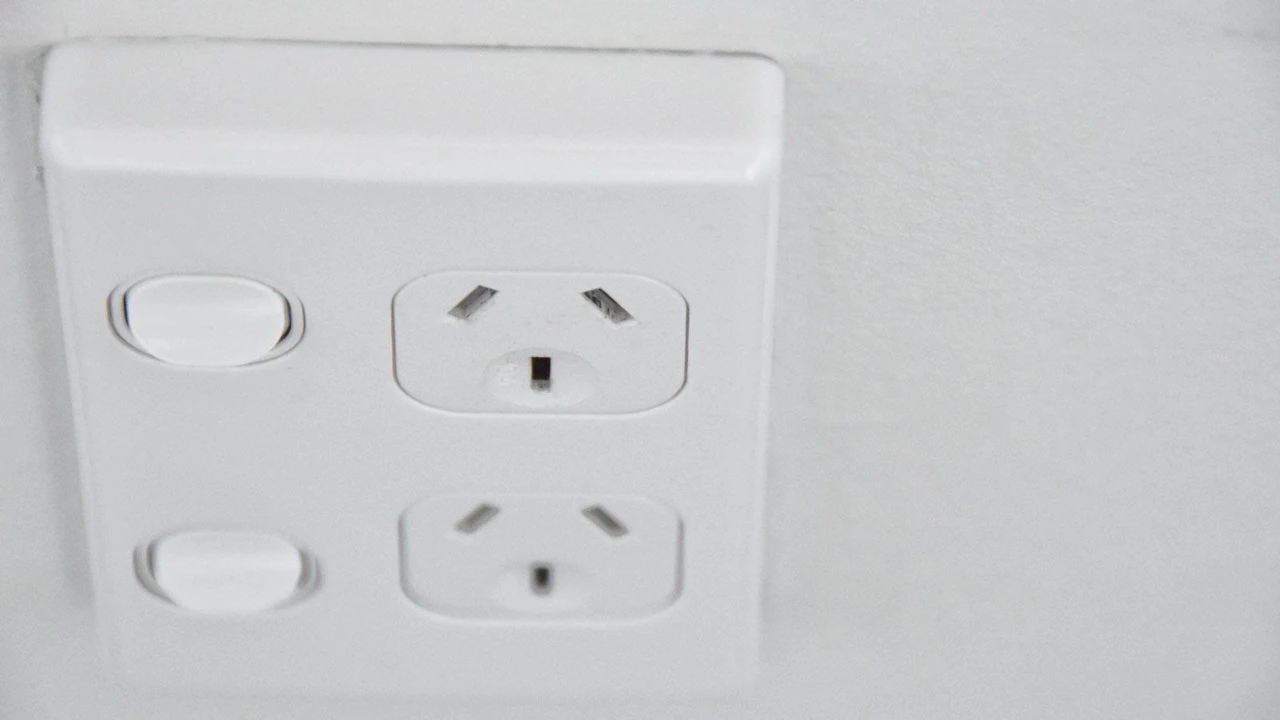New Zealand's Power Outlets and Adapters
Sample meta description.

Understanding New Zealand's Electrical System: Voltage and Frequency
Alright, so you're planning the trip of a lifetime to New Zealand! Awesome choice. But before you start dreaming of hobbits and breathtaking scenery, let's talk about something kinda boring but super important: electricity. You don't want to be stuck with a dead phone or camera halfway up a mountain, right?
New Zealand operates on a standard voltage of 230 volts and a frequency of 50 Hz. This is different from North America (120V, 60Hz) and some other parts of the world. So, if your devices are only rated for 100-120V, you'll need a voltage converter in addition to a plug adapter.
How do you know if your device is dual voltage? Look for a label on the power adapter or the device itself. It should say something like "100-240V" or "Input: 100-240V." If it does, you're good to go with just a plug adapter. If it only says "120V" or something similar, you *absolutely* need a voltage converter to avoid frying your precious gadgets.
The Type I Plug: New Zealand's Standard Power Outlet
New Zealand uses the Type I plug, which has two or three flat pins in a V-shape. The three-pin version includes a grounding pin. This is the standard you'll find everywhere from hotels to cafes to campervans.
If your devices use a different type of plug (like the Type A plugs common in North America or the Type C plugs used in Europe), you'll need a plug adapter. These are small, inexpensive devices that allow you to plug your device into a New Zealand power outlet.
Choosing the Right Plug Adapter: A Buyer's Guide
Okay, so you know you need a plug adapter. But which one should you choose? There are a ton of options out there, from basic single adapters to multi-adapters with USB ports. Here's a breakdown:
- Basic Plug Adapters: These are the simplest and cheapest option. They just change the shape of the plug so it fits into a New Zealand outlet. Great if you only have a few devices and don't need any fancy features.
- Multi-Adapters: These adapters have multiple plug types, so you can use them in different countries. This is a good option if you travel frequently. Look for ones with universal compatibility.
- USB Adapters: These adapters include USB ports for charging phones, tablets, and other USB-powered devices. Super convenient for reducing the number of adapters you need to carry.
- Adapters with Surge Protection: These adapters protect your devices from power surges, which can be common in some areas. A good idea if you're bringing expensive electronics.
Recommended Plug Adapters for New Zealand: Product Reviews and Comparisons
Alright, let's get down to brass tacks. Here are a few specific plug adapters I recommend for your trip to New Zealand, with details on their features, pros, cons, and prices (prices are approximate and can vary):
Option 1: EPICKA Universal Travel Adapter
Features: Universal compatibility (works in over 150 countries), 4 USB ports, 1 USB Type-C port, surge protection.
Pros: Very versatile, charges multiple devices simultaneously, built-in surge protection.
Cons: Can be a bit bulky.
Use Cases: Ideal for travelers with multiple devices who need a single adapter for all their needs. Perfect for families or groups traveling together.
Price: Around $25-$35 USD.
Option 2: BESTEK Grounded Universal Travel Adapter
Features: Grounded plug adapter, works in most countries (including New Zealand), compact design.
Pros: Grounded for safety, affordable, easy to pack.
Cons: Only one outlet, no USB ports.
Use Cases: A good basic option for travelers who only need to plug in one or two devices and don't need USB charging.
Price: Around $15-$20 USD.
Option 3: Ceptics New Zealand, Australia Travel Plug Adapter
Features: Specifically designed for New Zealand and Australia, compact and lightweight.
Pros: Inexpensive, reliable, easy to use.
Cons: Only works in New Zealand and Australia, no USB ports.
Use Cases: Best for travelers who are *only* visiting New Zealand or Australia and want a simple, no-frills adapter.
Price: Around $8-$12 USD.
Voltage Converters: Do You Really Need One?
As mentioned earlier, if your devices are not dual voltage (i.e., they only work on 100-120V), you'll need a voltage converter. These devices step down the voltage from 230V to 120V, allowing you to safely use your devices.
However, voltage converters can be bulky and expensive. Before buying one, check your devices carefully. Most modern electronics, like phones, laptops, and tablets, are dual voltage. Hair dryers, curling irons, and other heating appliances are more likely to require a voltage converter.
Recommended Voltage Converters: Product Reviews and Comparisons
If you *do* need a voltage converter, here are a couple of options to consider:
Option 1: BESTEK 200W Travel Voltage Converter
Features: Converts 220-240V to 110-120V, includes 3 AC outlets and 4 USB charging ports.
Pros: Can power multiple devices simultaneously, includes USB charging, compact design.
Cons: Limited power output (200W), not suitable for high-power appliances.
Use Cases: Ideal for charging multiple low-power devices like phones, tablets, and cameras.
Price: Around $30-$40 USD.
Option 2: Simran AC-2000 Step Down Voltage Converter
Features: Converts 220-240V to 110-120V, high power output (2000W).
Pros: Can handle high-power appliances like hair dryers and curling irons, durable construction.
Cons: Bulky, more expensive.
Use Cases: Suitable for travelers who need to use high-power appliances.
Price: Around $60-$80 USD.
Using Power Adapters and Converters Safely: Important Tips
Safety first! Here are a few tips for using power adapters and converters safely:
- Always check the voltage rating of your devices before plugging them in. Using a 120V device in a 230V outlet without a voltage converter can damage the device or even cause a fire.
- Don't overload power outlets. Plugging too many devices into a single outlet can overheat the circuit and cause a fire.
- Use surge protectors to protect your devices from power surges.
- Unplug adapters and converters when not in use.
- Inspect adapters and converters for damage before each use. If you see any cracks or frayed wires, don't use them.
Power Banks: Your On-the-Go Charging Solution
While adapters are essential for plugging into wall outlets, a power bank can be a lifesaver when you're out and about exploring New Zealand. Imagine hiking in Fiordland or kayaking in Abel Tasman National Park – you won't always have access to a power outlet!
A power bank is a portable battery that you can use to charge your phone, tablet, or camera on the go. They come in various sizes and capacities, so choose one that meets your needs.
Recommended Power Banks: Product Reviews and Comparisons
Here are a couple of power banks I recommend:
Option 1: Anker PowerCore 20100mAh Power Bank
Features: 20100mAh capacity, can charge a phone up to 7 times, fast charging technology.
Pros: High capacity, charges devices quickly, reliable brand.
Cons: Can be a bit bulky.
Use Cases: Ideal for long trips or for charging multiple devices.
Price: Around $40-$50 USD.
Option 2: INIU Portable Charger, Slimmest 10000mAh Power Bank
Features: 10000mAh capacity, slim and lightweight design, USB-C input/output.
Pros: Very portable, charges devices quickly, good value for money.
Cons: Lower capacity than some other power banks.
Use Cases: Great for everyday use or for short trips.
Price: Around $20-$30 USD.
Finding Power Outlets in New Zealand: Where to Charge Up
Finding power outlets in New Zealand is generally easy. Most hotels, hostels, cafes, and restaurants have plenty of outlets available. However, it's always a good idea to be prepared, especially if you're planning on spending a lot of time outdoors.
Here are a few tips for finding power outlets:
- Ask at your hotel or hostel. Most accommodations are happy to let you charge your devices.
- Look for outlets in cafes and restaurants. Many cafes offer free Wi-Fi and power outlets to customers.
- Bring a portable power bank. This is the best way to ensure you always have power, even when you're away from an outlet.
- Consider a solar charger. If you're planning on spending a lot of time hiking or camping, a solar charger can be a great way to keep your devices charged.
Powering Your Campervan or Motorhome: Essential Information
If you're renting a campervan or motorhome in New Zealand, you'll need to understand how the electrical system works. Most campervans have both 12V and 230V power systems. The 12V system is powered by the van's battery and is used for lights, the fridge, and other basic appliances. The 230V system is powered by plugging the van into an external power source (like at a campground) and is used for higher-power appliances like hair dryers and microwaves.
When choosing a campground, make sure it has powered sites if you need to use 230V appliances. You'll also need a special adapter cable to connect your campervan to the campground's power outlet.
Understanding Electricity Costs in New Zealand
Electricity prices in New Zealand can vary depending on the region and the time of day. Generally, electricity is more expensive during peak hours (morning and evening). If you're staying in a hotel or hostel, the cost of electricity is usually included in the price of your room. However, if you're renting a house or apartment, you'll likely be responsible for paying your own electricity bill.
To save money on electricity, try to use appliances during off-peak hours. You can also conserve energy by turning off lights when you leave a room and unplugging devices when they're not in use.
Troubleshooting Power Issues: What to Do When Things Go Wrong
Sometimes, things don't go according to plan. Here are a few common power issues you might encounter in New Zealand and how to troubleshoot them:
- Your device won't charge. Make sure the adapter is properly plugged in and that the outlet is working. Try a different outlet. If you're using a voltage converter, make sure it's set to the correct voltage.
- The power goes out. Check the circuit breaker or fuse box. If a circuit breaker has tripped, reset it. If a fuse has blown, replace it.
- Your adapter or converter is overheating. Unplug it immediately and let it cool down. Make sure you're not overloading the outlet.
If you're still having problems, consult a qualified electrician.
Sustainable Travel Tip: Conserving Energy in New Zealand
As a responsible traveler, it's important to be mindful of your energy consumption. Here are a few ways to conserve energy during your trip to New Zealand:
- Turn off lights when you leave a room.
- Unplug devices when they're not in use.
- Use energy-efficient appliances.
- Take shorter showers.
- Support businesses that are committed to sustainability.
By making small changes to your behavior, you can help protect New Zealand's environment for future generations.
Final Thoughts: Powering Your New Zealand Adventure
Planning your electrical needs before you go to New Zealand will ensure a smooth and enjoyable trip. Remember to check your devices for voltage compatibility, pack the right adapters (and potentially a voltage converter), and consider bringing a power bank for on-the-go charging. With a little preparation, you can stay connected and powered up throughout your incredible New Zealand adventure!
:max_bytes(150000):strip_icc()/277019-baked-pork-chops-with-cream-of-mushroom-soup-DDMFS-beauty-4x3-BG-7505-5762b731cf30447d9cbbbbbf387beafa.jpg)






